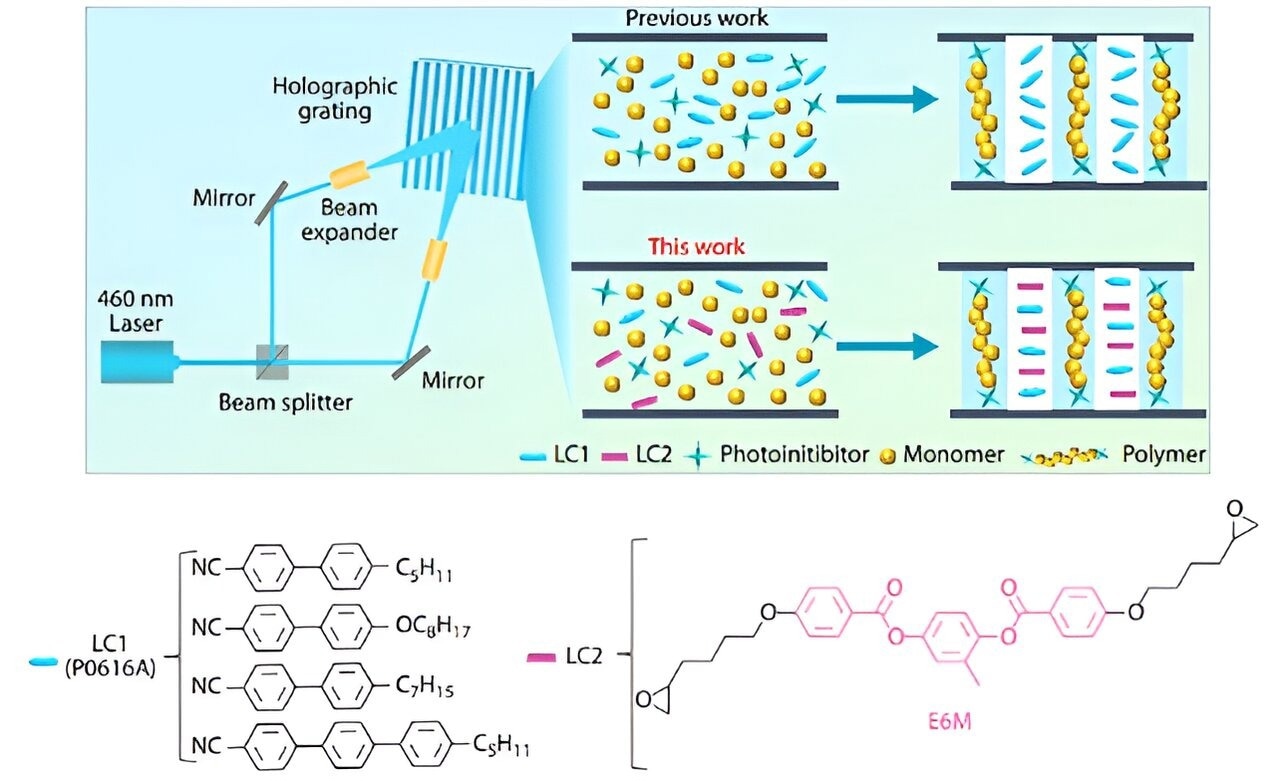Reviewed by Lexie CornerSep 4 2024
A research team from Huazhong University of Science and Technology published a study in the Chinese Journal of Polymer Science on April 10th, 2024, detailing a significant breakthrough in the development of holographic polymer nanocomposites. The breakthrough was achieved by utilizing the liquid crystal E6M.
 Schematic illustration on the construction of high-performance LC-based holographic polymer nanocomposites by doping E6M. P0616A was commercially available LC in nematic phase. Image Credit: Chinese Journal of Polymer Science (2024). DOI: 10.1007/s10118-024-3110-z
Schematic illustration on the construction of high-performance LC-based holographic polymer nanocomposites by doping E6M. P0616A was commercially available LC in nematic phase. Image Credit: Chinese Journal of Polymer Science (2024). DOI: 10.1007/s10118-024-3110-z
In augmented reality (AR) displays, holographic optical elements (HOEs) play a key role due to their ability to enhance optical efficiency and offer design flexibility. However, the limited refractive index modulation of existing materials constrains performance, especially when achieving higher brightness and a wider field of view. Researchers are developing materials that better regulate the refractive index to address these challenges.
A notable advancement is the incorporation of the liquid crystal E6M into polymer nanocomposites. This innovation achieved a refractive index modulation of 0.050 at 633 nm, while maintaining low haze at just 5.0 % with a 5 weight percent concentration of the liquid crystal.
The enhanced molecular alignment achieved by E6M addresses the common issue of balancing optical performance with material thinness. These composites also exhibit a high diffraction efficiency of 96.2 %, with a minimum thickness of just 5 μm, making them ideal for next-generation AR systems, where both efficiency and compactness are essential.
Our work demonstrates a major improvement in the optical performance of holographic polymer nanocomposites, which could transform AR device design. Achieving high diffraction efficiency with minimal thickness sets the stage for thinner, lighter, and more efficient AR displays.
Hai-Yan Peng, Study Corresponding Author and Professor, Huazhong University of Science and Technology
Advanced holographic polymer nanocomposites have important ramifications for the AR sector, particularly in terms of future display technologies.
Achieving high optical performance with reduced material thickness and minimal haze opens the door to more compact and efficient AR systems. This development could result in an increased application of AR technology in healthcare, education, and entertainment industries, improving user experiences and promoting innovation in the field.
Journal Reference:
Wang, M.-Y., et. al. (2024) Holographic Polymer Nanocomposites with High Refractive Index Modulation by Doping Liquid Crystal E6M. Chinese Journal of Polymer Science. doi.org/10.1007/s10118-024-3110-z